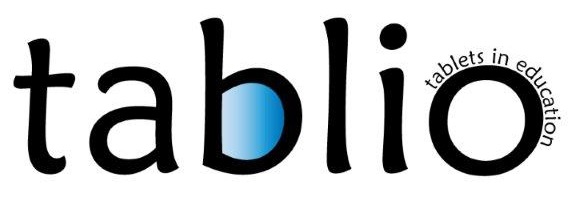St Connors Primary School, Omagh

KEY FINDINGS
- If you provide opportunities for differentiation you automatically introduce inclusion.
- Students’ prior knowledge and experience with tablets often exceeds curriculum demands.
- The use of technology is designed to increase knowledge regarding is subject area.
- Before leaving primary school all students are required to achieve level IV in the curriculum competency framework for ICT.
- Five E’s: Explore, Express, Exchange, Exhibit and Evaluate.
CURRENT SITUATION
The application of C2k network infrastructure is used in conjunction with an initiative from iTeach.
A key set of competencies are required as part of CEA guidelines that include the five E’s. These are, explore, express, exchange, exhibit and evaluate.
Software such as scratch, puppet and iMovie are used to improve literacy and ICT skills.
Additionally, students are encouraged to use audio files, audacity or pictures and text to explore a topic.
ACHIEVING DIFFERENTIATION AND INCLUSION
Differentiation is applied less in Key stage I where old laptops and one iPad are used for students to play with rather than being actively taught how to use them. The approach is meant to be one that is an introduction to technology rather than formal education about it.
Differentiation and inclusion can mean different things and this largely depends upon the resources there are available as well as peer training.
According to the curriculum students must have achieved a level IV stage in competency were the use of ICT is concerned. Ideally, before progressing to secondary school they would have achieved a level V.
Using tablet technology for inclusion is straightforward however differentiation is much more difficult. Time to plan for differentiation is a barrier. Additionally, apps that are used within the classroom as part of tablet technology are not often created with the curriculum in mind. This is reflective of the 'personalization' of technology for human use as a tool to enhance educational experience as Darling – Hammond (2014) indicates.
iPads are more interesting and user-friendly. There is a conflict between tablet technology and the system/infrastructure that we use to monitor students progression as part of the curriculum i.e. C2k. Additionally, using tablet technology can often take some time to setup. The majority of children find iPads are easier to use and it is becoming the norm to do so. However, it can be slow to introduce in the classroom i.e. passing the iPad around, ensuring everybody is logged in and using the correct count et cetera.
If you provide opportunities for differentiation you automatically introduce inclusion.
THE WAY FORWARD
Time, planning and resources are required in order to be very successful. This includes more human resources and more technical support. Further, opportunities for staff development in relation to the use of tablet technology would be useful. The use of tablet technology can be high risk and that if there is no planning can be chaotic. However, when there is clear planning that can be a high reward.
FILLING GAPS
Prior experience often exceeds the curriculum competencies. Children will often come to class with a very strong knowledge of how to use tablet technology. This supports the notion of 'poly-contextuality' and that informal learning, using technological devices, can operate in tandem with formal learning (Thorpe and Jones, 2014).
There is an inherent risk with app purchases and that they may not be suitable for the requirement of the curriculum. The use of external professionals such as those from AMMA has been very useful and has helped to integrate the use of tablet technology into your classrooms.
The advantages of tablets are that they help to increase literacy skills as well as listening skills. These are primarily conducted via apps such as puppet pals and telegamma that enable students’ to develop core competencies and communication. The use of tablets produces a number of ICT skills however these are seen as secondary to the improvement of English, mathematics or an understanding of history. This is reflective of what Conole (2011, P. 397,401) termed as the 'functionality' of technology to achieve greater learning outcomes.
One teacher in particular uses QR codes in their teaching. Here, a series of questions would be provided for students in relation to an historical event for example the sinking of the Titanic. Students will then be given QR codes that allow them to express an idea surrounding a question. For example, the QR code may indicate a yes or no response. The teacher will ask the students questions and using a tablet gather the responses from the QR codes that the students are using and then collate the responses on the interactive whiteboard. Additionally, the use of green screen for films and music production is also present.
Technology has advanced and the changes very quickly and is very easy to be overloaded by the changes that happen. Additionally technology, given that it advances so quickly, can become outdated quickly and the use of technology often depends on the vision of the school for its students.
Students will also use iPads to collaborate with other schools. For example, when working on a project in primary seven students will (using interactive whiteboard and tablets) collaborate with other students and other primary schools in Northern Ireland. These communication exchanges form part of developing knowledge in relation to historical or cultural areas from the curriculum. Students will express their ideas to each other using the tablets to reduce the communicative distance.
Reference list
Conole, G. (2011) ‘Stepping over the edge: the implications of new technologies for education’ in Lee, M.J.W. and McLoughlin, C. (eds)Web 2.0-based E-learning: Applying Social Informatics for Tertiary Teaching, Hershey, PA, IGI Global.
Darling-Hammond, L. (2014). Economist Debates: Technology in education. The Economist. Online: http://www.economist.com/debate/days/view/120 [Accessed 25 April 2017].
Thorpe, M and Jones, C. (2014) ‘Technology-mediated learning contexts’, online: https://learn2.open.ac.uk/mod/oucontent/view.php?id=436396§ion=6 [accessed 21st April 2017].
